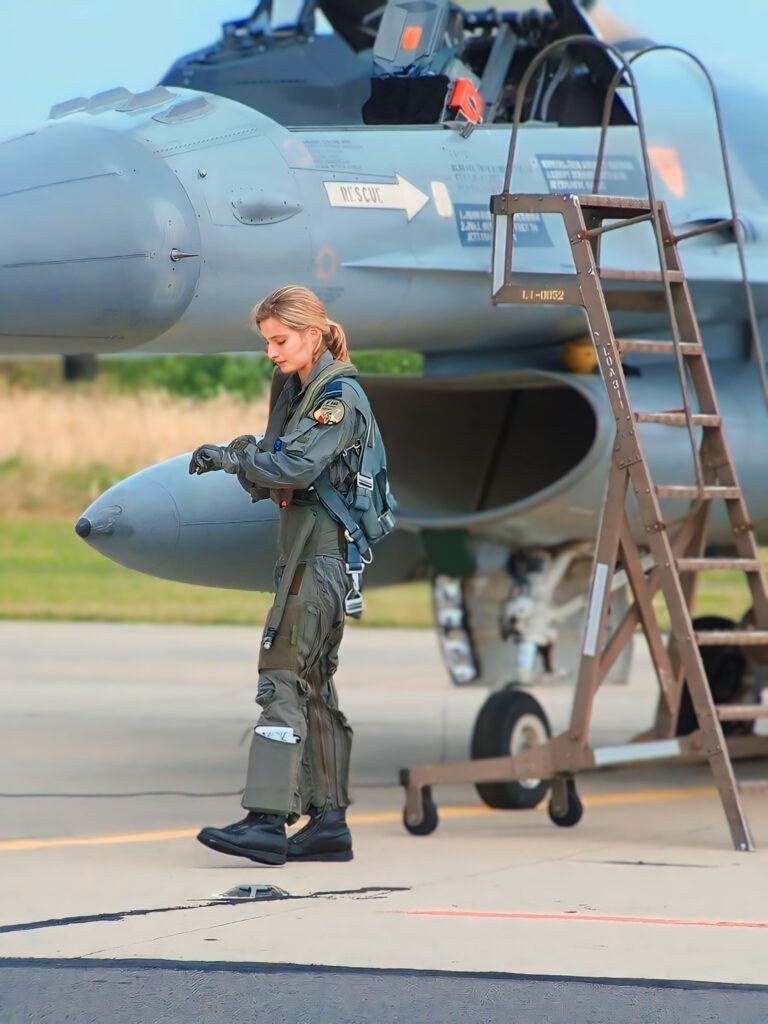
The F-16 Fighting Falcon is one of the most successful and recognizable fighter aircraft ever built. Developed by General Dynamics (now Lockheed Martin) for the United States Air Force, the F-16 first flew in 1974 and entered service in 1978. Originally designed as a lightweight, highly maneuverable air superiority fighter, it has evolved into a versatile multirole aircraft capable of performing both air-to-air and air-to-ground missions with remarkable precision.
The F-16’s design philosophy centered on agility, speed, and affordability. It was the first production fighter to feature a frameless bubble canopy for improved visibility, a side-mounted control stick for easier handling during high g-forces, and a fly-by-wire flight control system that electronically assists the pilot. These features made the F-16 extremely responsive and easy to control, setting new standards for fighter design at the time. Its single-engine configuration, powered by a Pratt & Whitney F100 or General Electric F110 engine, allows the aircraft to reach speeds over Mach 2 and operate at altitudes exceeding 50,000 feet.
One of the reasons for the F-16’s success is its adaptability. Over the years, it has been continuously upgraded with advanced radar systems, modern avionics, precision-guided weapons, and electronic warfare capabilities. The latest versions, such as the F-16V (Viper), include an advanced Active Electronically Scanned Array (AESA) radar, improved cockpit displays, and compatibility with modern weapon systems. These enhancements ensure the aircraft remains a formidable platform in modern combat despite being in service for nearly five decades.
In addition to its performance, the F-16 has proven to be highly cost-effective compared to other fighter aircraft. Its relatively low operating costs and ease of maintenance have made it attractive to many air forces around the world. More than 4,600 units have been produced, and the aircraft is currently operated by over 25 nations, including the United States, Israel, Turkey, South Korea, and many NATO allies. Its wide global presence has also fostered strong cooperation among allied forces and a reliable supply chain for parts and upgrades.
The F-16 has seen extensive combat service across the globe. It has participated in major conflicts such as the Gulf War, the wars in Iraq and Afghanistan, and various regional conflicts where it has proven its effectiveness in both air superiority and precision strike roles. Its versatility allows it to perform missions ranging from close air support and reconnaissance to interception and suppression of enemy air defenses.
Even as newer fifth-generation fighters like the F-35 Lightning II enter service, the F-16 remains a key asset. Many countries continue to upgrade their fleets rather than retire them, recognizing the aircraft’s enduring value and combat capability. The F-16’s legacy lies not only in its impressive performance but also in its role as a bridge between earlier generations of fighters and the advanced technology of today’s air forces.
In summary, the F-16 Fighting Falcon stands as a symbol of modern military aviation. Its combination of speed, maneuverability, versatility, and proven combat record has made it one of the most respected and widely used fighter jets in history. Few aircraft have matched its impact or longevity, and it continues to play a vital role in global defense well into the 21st century.


